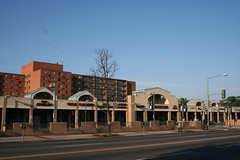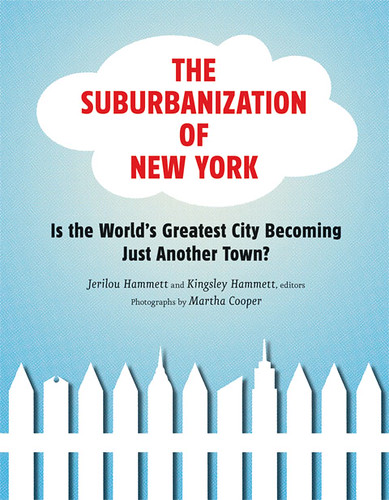Urban vs. suburban vs. exurban: It's more complicated than we think
The real issue I suppose is compact development.
Ken and I were talking yesterday about the difference between urban and suburban, and he made the point that the suburbs are anything outside the city, but that "suburban" development is not uncommon within a city.
He commented that "suburban development" isn't appropriate within a city, and I countered that in can be, depending on when and where--for example, Brookland and Takoma DC/Takoma Park, MD are "trolley"-railroad suburbs, developed around a core, but mostly with detached housing.
What we call suburban development is usually single use, deconcentrated, and generally reliant on automobiles for mobility. Urban development may not be mixed use, but it is (supposed to be) concentrated, usually built in an attached form, with zero space between buildings at the lot lines, and a zero setback from the sidewalk, at least for commercial buildings. If there is parking, it's placed in the rear, or on the street, without curb cuts.
This has a couple different dimensions.
1. Center city vs. suburbs vs. exurbs within a broad metropolitan area.
2. What Andres Duany and others call the transect.

Transect, from less dense or open space/farmland (T1/T2) to dense, urban, attached housing and commercial properties (T6 is the most dense).
The transect is a spatial organizing tool for considering development at the regional scale.
But even within a region, there are different subscales.
For example, within Washington, DC, the "L'Enfant City," the part of the city designed by Pierre L'Enfant in 1791, plus Georgetown, and the communities immediately abutting the "Old City" which were once located in "Washington County" have a distinctly urban (small lots, attached housing, short--but not usually zero--setbacks, no street-facing garages and curbcuts--ecept for the Barrett Linde transgressions of the 1970s and 1980s) pattern.

L'Enfant plan on a necktie.
As you get out into the city (really the old "County"), often houses are detached, and houses may have had garages, some actually within the footprint of the house--just like the suburbs--although usually from the rear. For the most part, this part of the city was developed around the time of the car, and it reflects such patterns of development, patterns we would even call suburban.
A particularly interesting resource and great read is this bulletin from the National Register of Historic Places, Historic Residential Suburbs: Guidelines for Evaluation and Documentation for the National Register of Historic Places.
Now, it's not all cut and dried. Certain streets, like Connecticut Avenue NW, are lined with large apartment and condominium buildings, but for the most part this part of the city has a more suburban pattern--another exception, Friendship Heights, which has a lot of rowhouses, and rowhouses are sprinkled throughout the suburban parts of the northeast and northwest quadrants.
It's complicated, because the "Park and Shop" strip shopping center in Cleveland Park fits its time and place, while similar strip shopping centers on H Street NE or in Columbia Heights are transect violators.
And the preservationist/planner in me argues vociferously about keeping the parking lot as part of the center in Cleveland Park, because it is a key element of the development type from the standpoint of preservation, while I argue for redevelopment of the "equivalent centers" elsewhere. (Note that the Cleveland Park shopping center is considered to be the very first of its kind in the United States, and therefore is "more" special than most.)

H Street Connection photo by Elise Bernard.

But fighting inward suburbanization of the urban parts of the city is an ongoing battle, although one that is changing a bit, because of the increased value and decreasing inventory of land.
And, I would argue that to better pattern the city, more parts of it that are being developed/redeveloped for whatever reason, need to be developed in distinctly urban patterns, rather than suburban patterns. Retail developments at the Rhode Island Metro Station (Home Depot, Giant, etc.) and in Congress Heights (Giant Supermarket, parking pad-housed IHOP, etc.) are perfect examples.

It's not just a problem in DC...



0 Comments:
Post a Comment
<< Home